OCC - The build up and race
For those who started reading with the ‘Inside the Training Diary’ posts I wrote last year: I intend to write more of these. I just haven’t found time to do the writing and research around my training and work. However, the first few posts I wrote here were about my own training, and that is what this is.
Bear in mind that I wrote this as my own reflection - but hopefully it is interesting regardless of your own racing goals.
Introduction
The OCC is one of the three UTMB World Series Finals which take place in Chamonix. It is named for the three towns it passes through: Orsieres, Champex-Lac, and Chamonix.
Whilst it is one of the shorter races of the UTMB week in Chamonix, it is still pretty long at 57 km and 3500 m of elevation. It is also one of the most competitive ‘short’ ultras in the world each year.
OCC would be the longest race I had ever attempted - 12 km further that the World Mountain and Trail Running Championships I raced last year.
How do you prepare for something longer than you’ve ever run before? It’s the same question I asked last year, and I am slightly more confident that I can answer it now.
Despite being somewhat of a step into the unknown, I think you can’t go far wrong if you:
Understand the specific demands of the event
Stick to fundamental training principles
Race demands and goals
To train for any event, you need to understand what it is you are trying to do. For a simple example: if you want to run 10,000 m in 30 minutes, you need to run 25 laps of the track in 72 seconds. That is the specific demand of your goal.
The specific demands of a mountain ultra like OCC don’t need to be much more complicated.
I calculated that I was trying to run 4:05 - 4:10 min/km grade adjusted pace, for about 5 hours 15 minutes, on a course with about 600 m of climbing and descending per 10 km. Alongside that, I needed to be able to run uphill with an average 10-15% gradient at a rate of 1100-1400 m/h at an appropriate effort for the race distance.
I calculated based off my goal (initially top 5, but as more top names were added to the field I began to think my timings might not be enough for that), previous results (both in the race and my own), and an expectation that the race would be faster this year than previous. It would be a little slower if the weather was hot, but I wouldn’t do many runs in the heat in training.
Breaking it down a little, I knew that:
Race effort would have to be around the first lactate threshold for the majority of the race. At times, higher than this, but not much of the race would be at or higher than the second lactate threshold.
I’d have to fuel and drink enough to sustain that effort without running out of energy.
I’d have to do all of that over some steep and/or highly technical sections of trail and at altitude (~10 km of the course is about 2000 m altitude). Most of the course is very runnable, but it has rougher sections as well.
I looked at the time that was spent in different parts of the course: About 60% of the race time is spent going uphill, about 30% is spent going downhill, and the rest is relatively flat.
So, despite being further than I’d ever attempted before, I had a good idea of what I was trying to do. I could use that to plan training and evaluate how I was doing - just as I might for a 10,000 m on the track.
Training principles
I used the example of a 10,000 m because that, alongside orienteering, was my main focus just two years ago. It seems like racing 10,000 m on the track and 57 km over the French alps are quite different endeavors, but I think the training has more similarities than differences.
Do a lot of easy running.
Do some hard and/or fast running.
Stress your body enough that it must adapt, but not so much that it can’t adapt. ‘Enough’ stress is a moving target, and is different for every person.
Recover and repeat.
My training now doesn’t look too different to what it looked like a few years ago. I’ve found certain patterns of training work that for me and I’ve built up solid routines that allow me to train consistently. I think I have a good understanding of what stress my body can recover from (and what might be too much). It’s far from perfect, but I think my basics have been pretty strong over the years.
On the trails, I race against people whose training looks very different to mine on the surface, but fundamentally I think the principles are more similar than they are different.
The interesting thing about racing a different distance or discipline is that you have to apply the same principles in a different way. It’s a chance to take what you think you know, while adapting or trying new training methods to prepare for the specificity of the event.
The plan
Next comes the fun part. How does all that stuff actually come together into a plan?
First, the long term plan for the year.
In the summer of 2023, I raced quite a lot after the World Championships. Too much. I had a couple of good performances, including the race that qualified me for OCC, but I ended the summer a bit burned out and carrying a couple of nagging injuries.
I didn’t want to repeat that in 2024. Being relatively new to longer mountain races probably means that I don’t recover as quickly as others. I’m also not convinced that doing longer races is the best way to prepare to race well.
To give another track and field example; you often see marathoners target a half marathon or a 10 km before they start their marathon block. Working toward a different, shorter, race distance helps the preparation for the longer distance.
With this in mind, I targeted the Uphill and Up & Down races at the European Off-Road Championships at the start of June. There was a Trail race at those championships with very similar distance and climb as the OCC, but I thought that spending the start of the season preparing for shorter races would put me in a better place to race well later in the season. It was also nice to experience racing at a high level over the shorter mountain running distances - something I have not done before.
The season was broken into two parts:
Pre-European Championships: Primarily threshold and harder efforts.
Post-European Championships: Primarily longer, steadier efforts.
Throughout the season I wanted to focus on developing my uphill running (as that is where most of the race time is spent) and particularly steeper uphill running.
That meant embracing indoor sessions - uphill treadmill and the stairmaster - to get in more climbing during the week when I couldn’t run big uphills without travelling. Around half of my harder sessions have been indoors this year.
A typical week had two harder sessions - normally Tuesday and Friday - and one longer run - normally Sunday. The rest of the weekly volume was at an easy effort.
Typically one harder session would be indoors with around 25-35 minutes of ‘hard volume’ earlier in the year (threshold and above); progressing to 45-55 minutes of ‘hard volume’ (all below threshold) after the European Championships.
The second harder session was typically flatter and outside. This varied a little more, but post European’s I often targeted around 15 km of half-marathon to marathon effort.
If I couldn’t run two sessions and a long run in a given week, then the long run would take priority over the second session. Early in the season I focussed on consistently running 2-3 hours in the hills each week. Later in the season I tried to run 3 hours every week and made more effort to make sure the climb/distance profile matched OCC.
After the European Championships, I ran a few long runs at a steady effort - or what I thought/hoped the effort might be for OCC. These were a key opportunity to condition my legs for the race and to practise nutrition. I didn’t do as many of these as I would have liked, and didn’t always reach the right effort level, but they were some of the best sessions and the most confidence building.
Earlier in the season I also added some cycling volume - the reasoning behind this was that I hoped I could raise my volume a little above the 11-12 hours that I have managed in the past, with a bit less risk compared to adding running volume. I stopped this in the last six weeks before OCC - prioritising running.
The training
In the eight weeks before the European Championships (not including 1 taper week), I averaged:
10 h 14 m of running, 1 h 30 m of cycling, and 35 m of S&C per week.
That resulted in 119.3 km (74.1 mi) and 3420 m of climbing in an average week (counting indoor climbing as well as outdoor).
Preparation wasn’t the smoothest. I had COVID at the end of March and afterwards it took a few weeks to feel like I was making progress in training. A few races in the build up gave me confidence that my shape was good.
The European Championships were a fun experience. I raced OK - 10th in the uphill race, and 6th in the up and down race. I struggled a little with the conditions of the uphill only race - wet, cold, and super muddy (you’d think I’d be more used to those conditions!) - but was happier with my performance in the up and down race. In both races I lost time on the steepest parts of the climbs.
In the 12 weeks before OCC (not including 1 taper week), I averaged:
11 h 15 m of running, 1 h 2 m of cycling, and 42 m of S&C per week.
That resulted in 130.5 km (81.1 mi) and 3980 m of climbing in an average week.
Again, the training didn’t progress exactly as I would have liked. I fell and hurt my knee racing the Copper Trail Skyrace and had a week of compromised training as it recovered. I was also sick at the end of July, just before I headed to Chamonix for a HOKA training camp. That was the only time I spent in the Alps before the race and during that week I recce’d the course. I made the most of that week in France, but took some extra fatigue into it because of the illness.
My full training is on Strava or Attackpoint.
The race
The race has four main climbs and descents which I used to break it down into more manageable chunks. My plan was to stick to my own rhythm as much as possible in the first three hours and to focus on getting in fuel. I felt like I managed that pretty well - and running into Trient (after two climbs and about 2 h 5 m) I didn’t feel too dissimilar to some of my longer preparation runs.
I pushed a little harder up the third climb - being passed by Antonio Martinez and Aritz Egea but pulling away from some others. Reaching the highest part of the course, with the temperatures also rising, my legs started to feel the effort. I backed off on the technical traverse to the Col de Balme to give myself a chance to recover. I reached the Col in 7th and started to feel better.
I ran the first part of this descent with Francesco Puppi and we passed early leader Christian Allen and Remi Bonnet. However, just before we reached the steeper part of the descent, the adductors in both my legs started to cramp. I couldn’t do anything other than let Francesco go and manage my legs as best I could. The cramp went, but the good feelings in my legs were gone.
The rest of the race was tough. My legs were painful on the downhills and I got slower and slower. I had cramp once more on a descent, but more generally my legs were trashed. I was moving a bit better on the uphills, but with less power than I hoped for. Frustratingly, I still had good energy (I’d stuck to my fuel plan and had no issues) and was moving well on the flat (but there is not much of that).
I dropped into 6th place, and spent most of the last climb worrying about dropping further down the rankings. I was surprised to see 4th and 5th ahead near the top of the last climb to La Flegere. I was struggling, but they were as well. I almost caught them, but was instantly dropped once we hit the descent into Chamonix. After a very slow descent, I finished strong on the last flat kilometre into Chamonix (my fastest of the race - 3:24).
6th place. 5 hours, 27 minutes, 49 seconds. 16 minutes behind the winner - Eli Hemming.
Overall, I was pretty satisfied with how I raced - I think I got pretty close to my ability on the day. I knew that the distance was a bit out of my comfort zone (only once before have I run over 4 hours), so it wasn’t too surprising that my legs were trashed at the end. However, it was still pretty frustrating that they deserted me so early.
What went well?
Throughout most of this article, I’ve written ‘I planned’ or ‘I decided’, but one of the big changes this year has been the support I’ve had in making those plans and decisions. I joined the Elite Trail Team which provides a multidisciplinary support team to support all aspects of my training. It has been a big help.
Through the Elite Trail Team, I’m now coached by Doug Stewart (TMR coaching). I still take control of most aspects of setting my training plan - a big part of my motivation in sport is figuring out the puzzle of training - but Doug provides a second opinion and an unbiased view of my preparation.
Most importantly, I got to the race healthy, fit, and excited to race. The other things that I think went well in the preparation were:
Uphill Running - I don’t think I showed it in OCC (pacing) but I’ve set a lot of my fastest climbing times in training this year. I wasn’t completely sold on uphill treadmill/stairs for training uphill running - and I still think it is better to train on a real climb if possible - but I don’t have access to big climbs I can regularly train on. It helped my uphill, even if it wasn’t perfect.
Nutrition - In the race, I had 112 g of carbohydrate per hour, 1.1 l of fluid per hour, 750 mg of sodium per l, and 260 mg of caffeine. More fuel than I’ve ever managed to take on in a race, zero stomach issues, and good energy right until the end. It something Rebecca Dent (High Performance Dietitian) helped me plan out and practice in training. I’ve also been fuelling more within training sessions; not only to practice race nutrition but to support training.
Pre-Race - I slept really well in the week prior to the race. Using advice from Charlotte Edelsten (High Performance Sleep) helped me to build my sleep to around 9.5-10 hours each night in the month prior. The night before the race, and despite an early start, I slept for 7 hours, woke up to eat, and then slept for another hour. Good habits.
Mindset - I felt comfortable and relaxed before the race. I had some nerves, but I was quietly confident as well. I wrote down my thoughts in the week prior. What I needed to do and when. What my plans were for the race. What might go wrong and what I could do if it did. I talked things through with Josie Perry (Performance in Mind) and that helped organise my thoughts before the race.
Heat preparation - I did two weeks of hot baths in the run up to the race. During the race I cooled as much as I could (bucket hat perfect for soaking in streams). I felt the heat on the last climb, when the temperatures were over 30 degrees, but I think the preparation helped to mitigate the worst of it.
Not to say I can’t improve in any of these aspects, but I I was quite satisfied with these parts of the preparation.
What could be better?
I’m happy with my preparation, and my performance in the race, but I think that I can do better. It is nice to feel like I can continue to learn and improve. To try things, get some things wrong, and to try to get better.
Leg conditioning - This is the main one. I didn’t have the strength endurance in my legs to race at the required intensity for the distance/climb. I hoped the longer runs up to three hours of race effort, including downhills, would help to condition my legs. I think they did help, but I didn’t get as many of these runs as I would have liked. Generally doing more running in the mountains would help I think, and there are probably other things I can do to better prepare my legs next time. More thought needed.
Turnover - I have a lower cadence than many runners - always have - and that is probably somewhat optimal for me. But in focussing on uphill running, which naturally has a lower cadence, I think I lost some ability to turn my legs over faster. Being able to access that higher cadence helps on the downhill and the flat. I ran strides about twice a week, but could probably have worked on this aspect of running a little more during the training block.
Modulation - My training philosophy is based on consistent smaller efforts - accumulating stimulus over time and not often going to the well in training. I won’t be moving far from that, but I think it might be beneficial to occasionally have periods or sessions where I push harder with appropriate recovery.
Could I have been fitter on the start line? Probably. In a lot of ways I still know more about how to prepare for shorter, flatter races, and don’t always get the balance right now I’m trying to apply that in a different arena.
Thanks for reading to the end. I hope it you found it useful. Feel free to leave a comment or message me on Instagram if you find something particularly interesting.


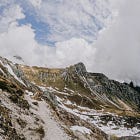
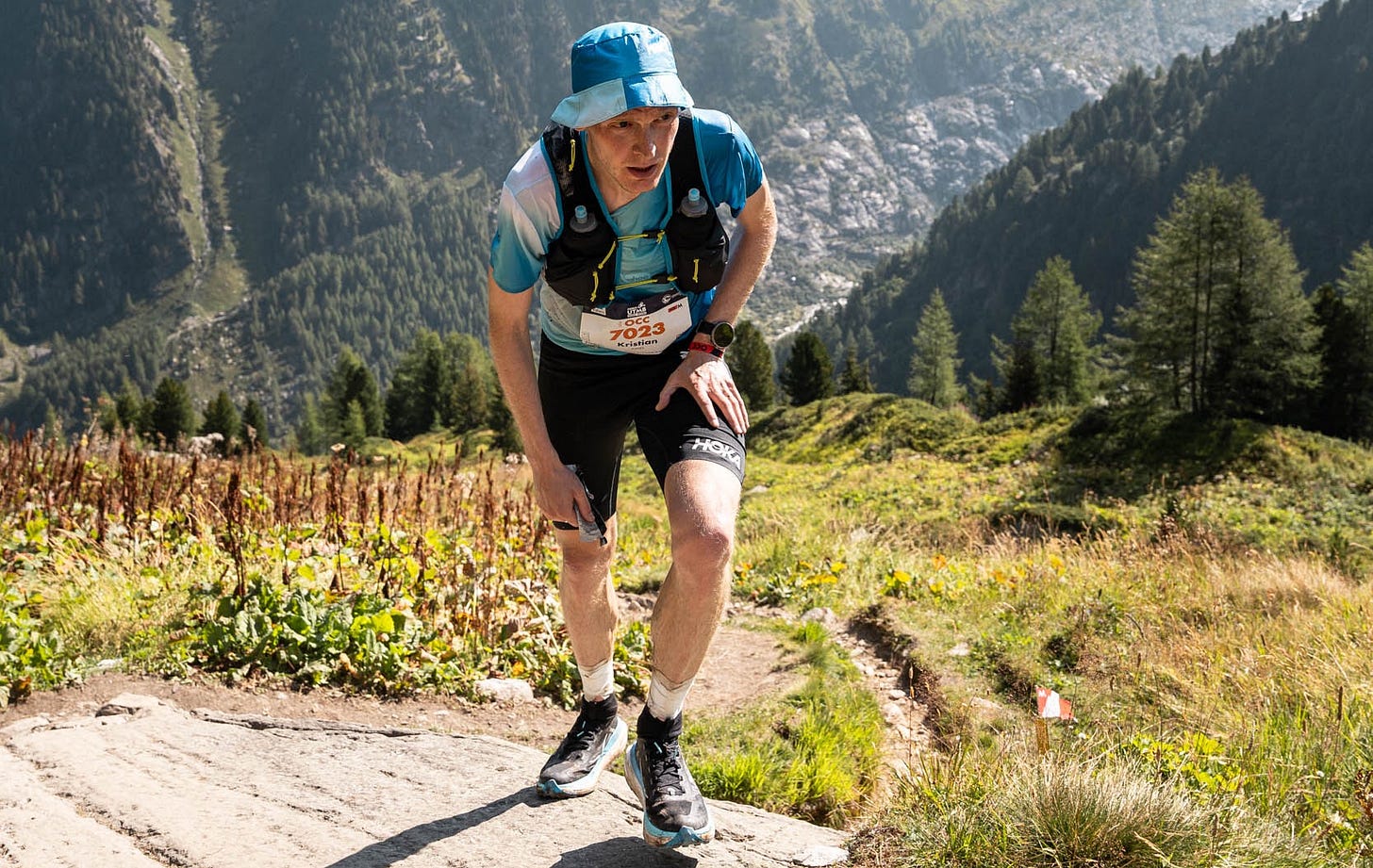
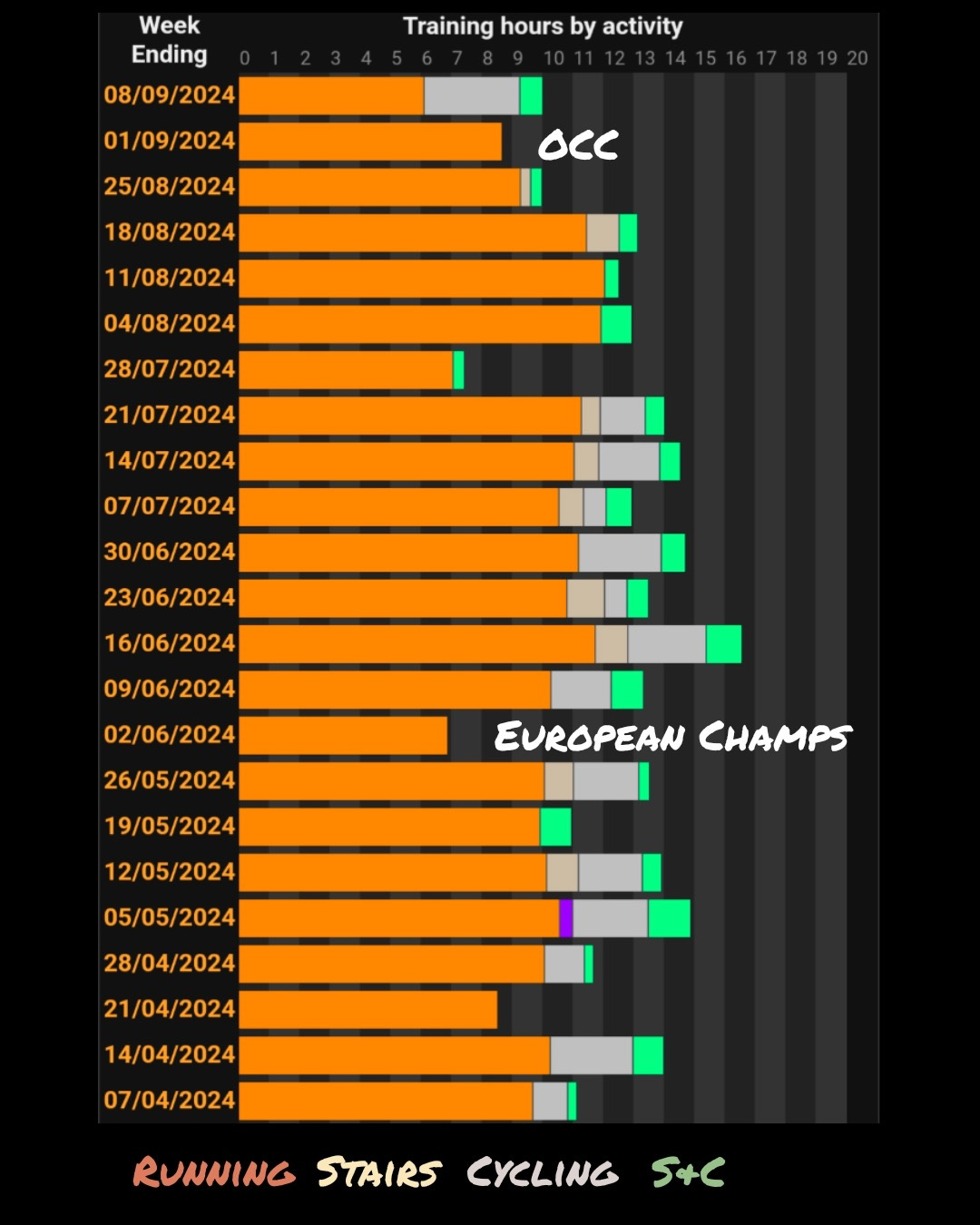
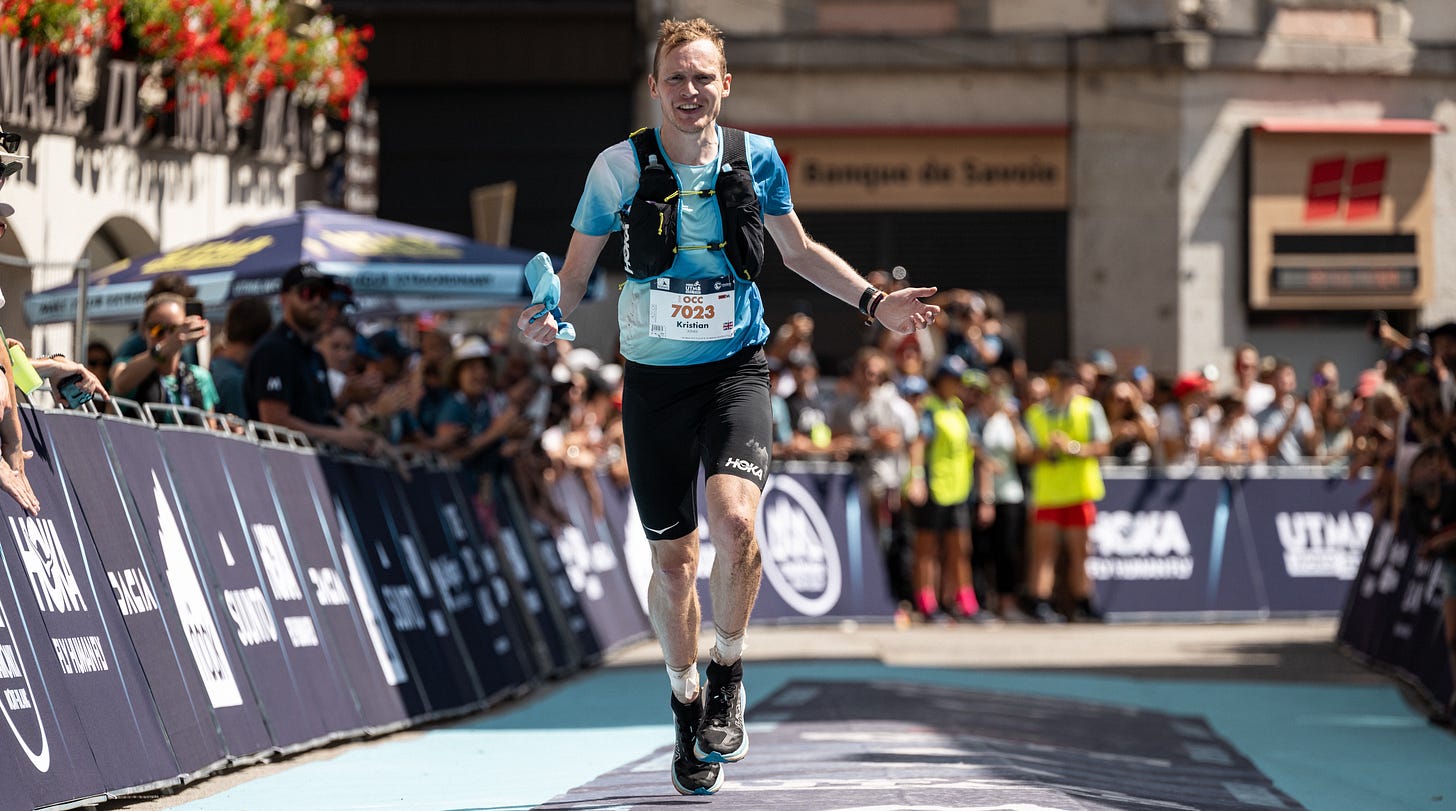
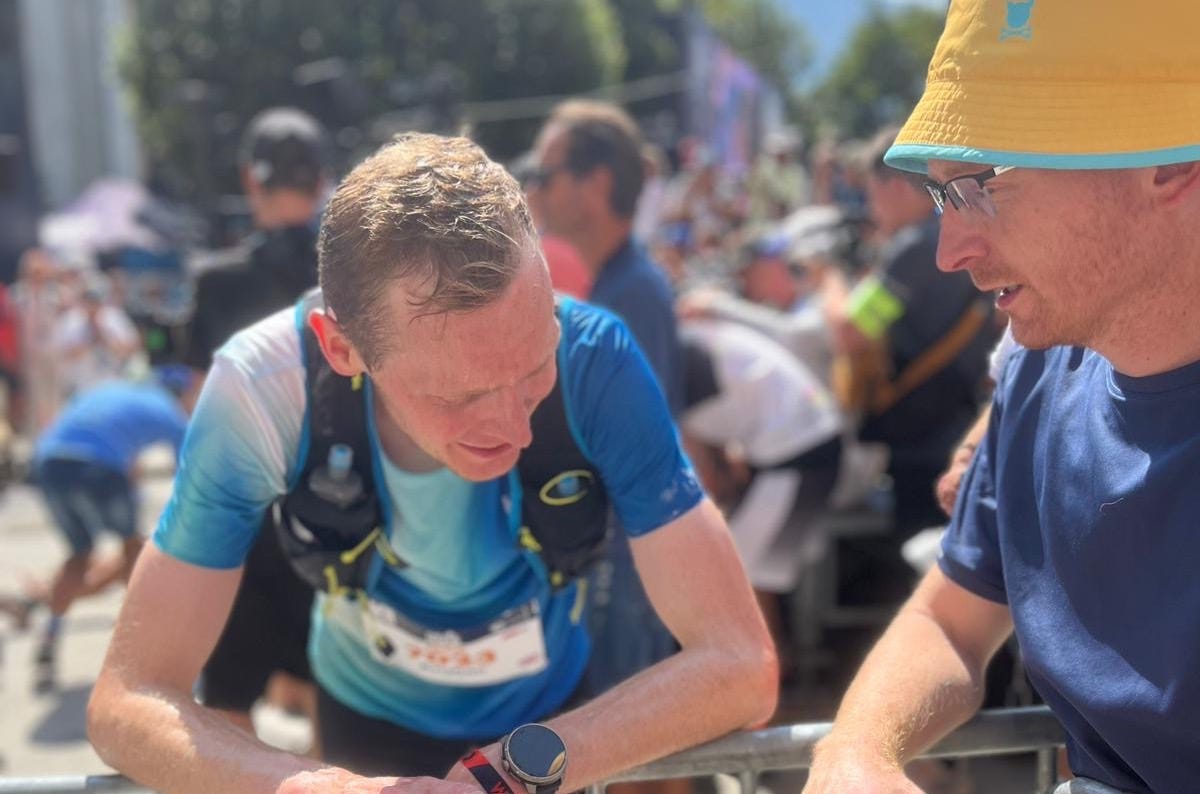
Super interesting and well written 👍
Very interesting and thorough. Thank you for taking the time to set it out. I take a lot from your write-ups.